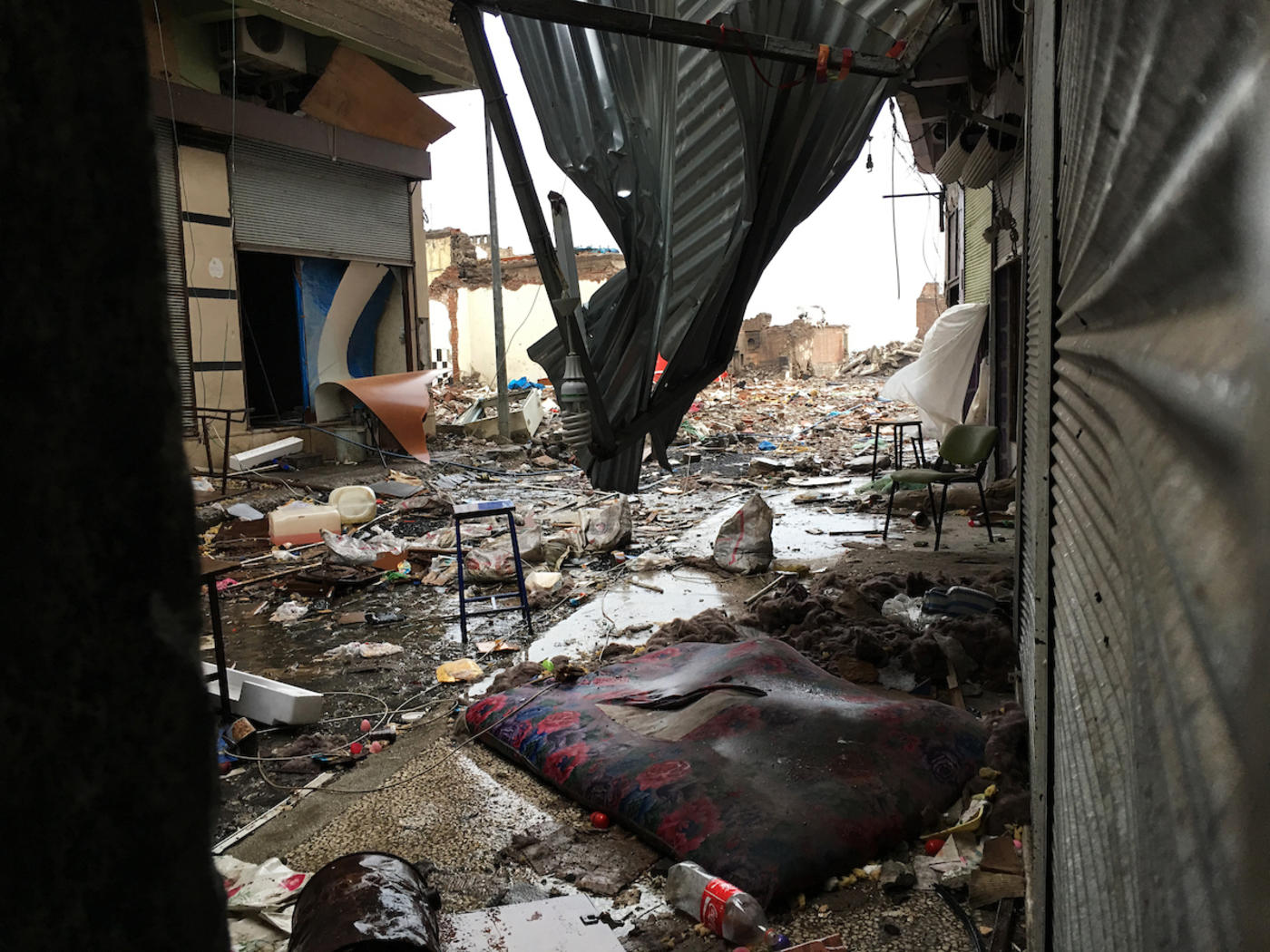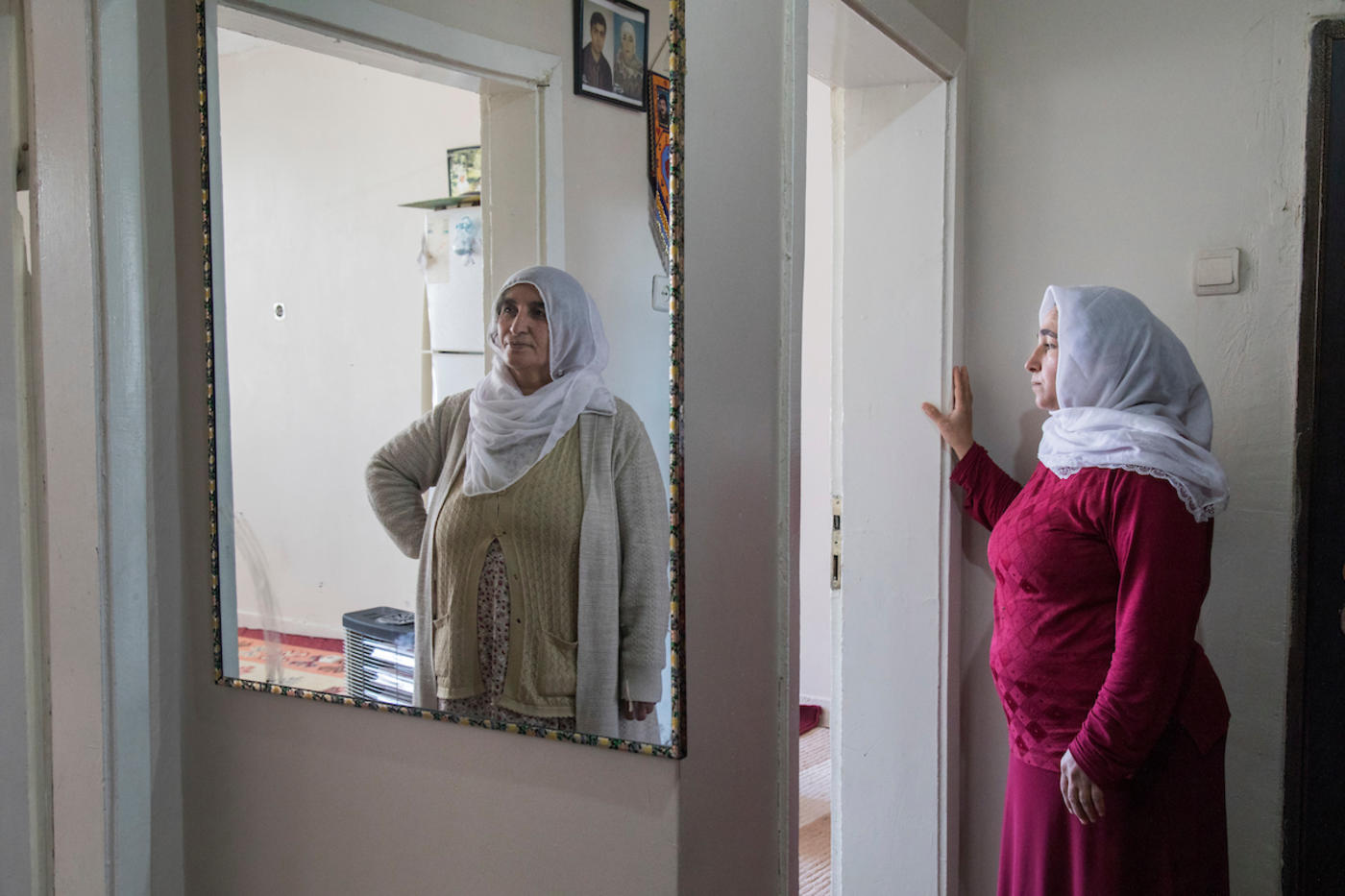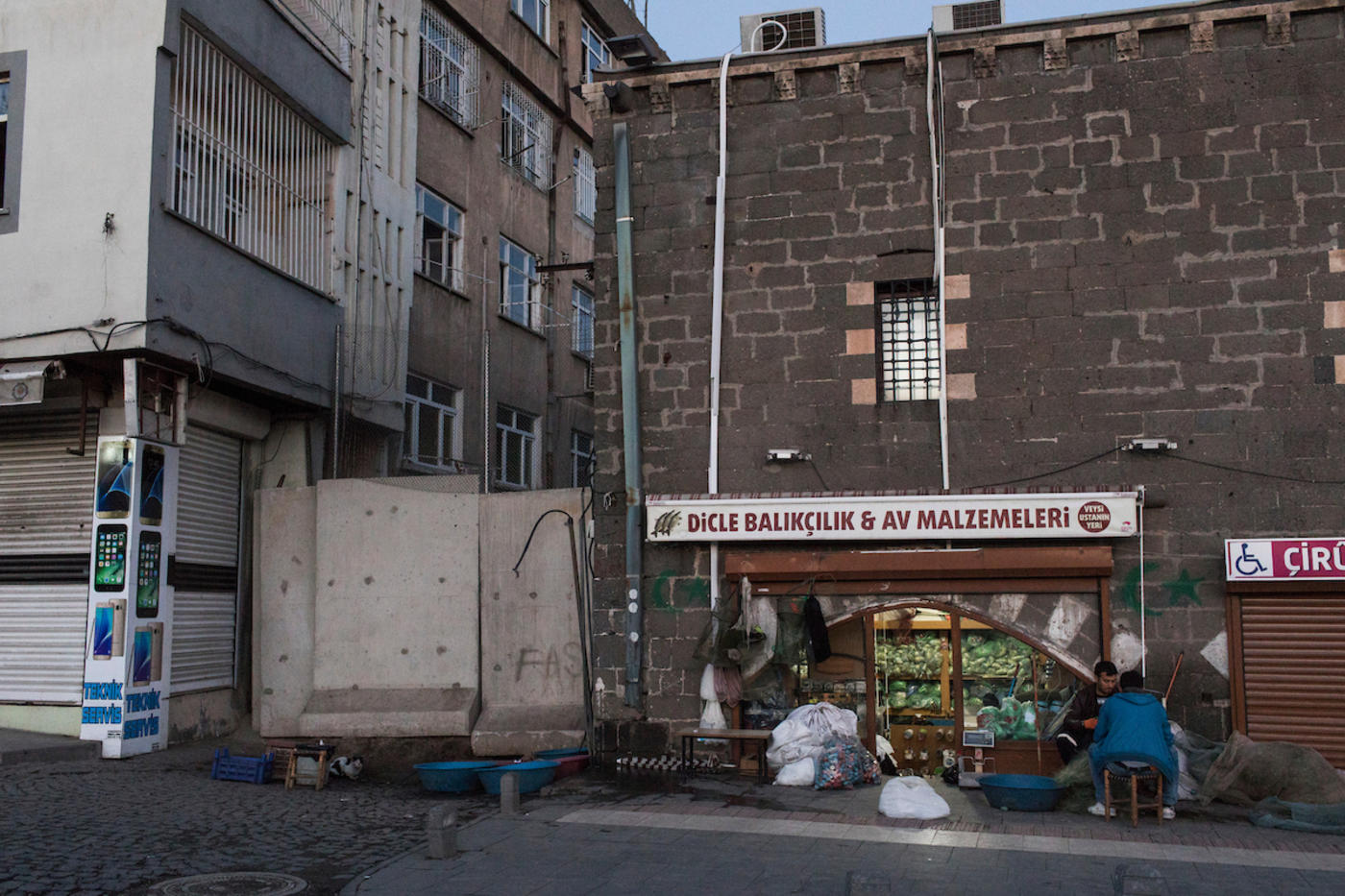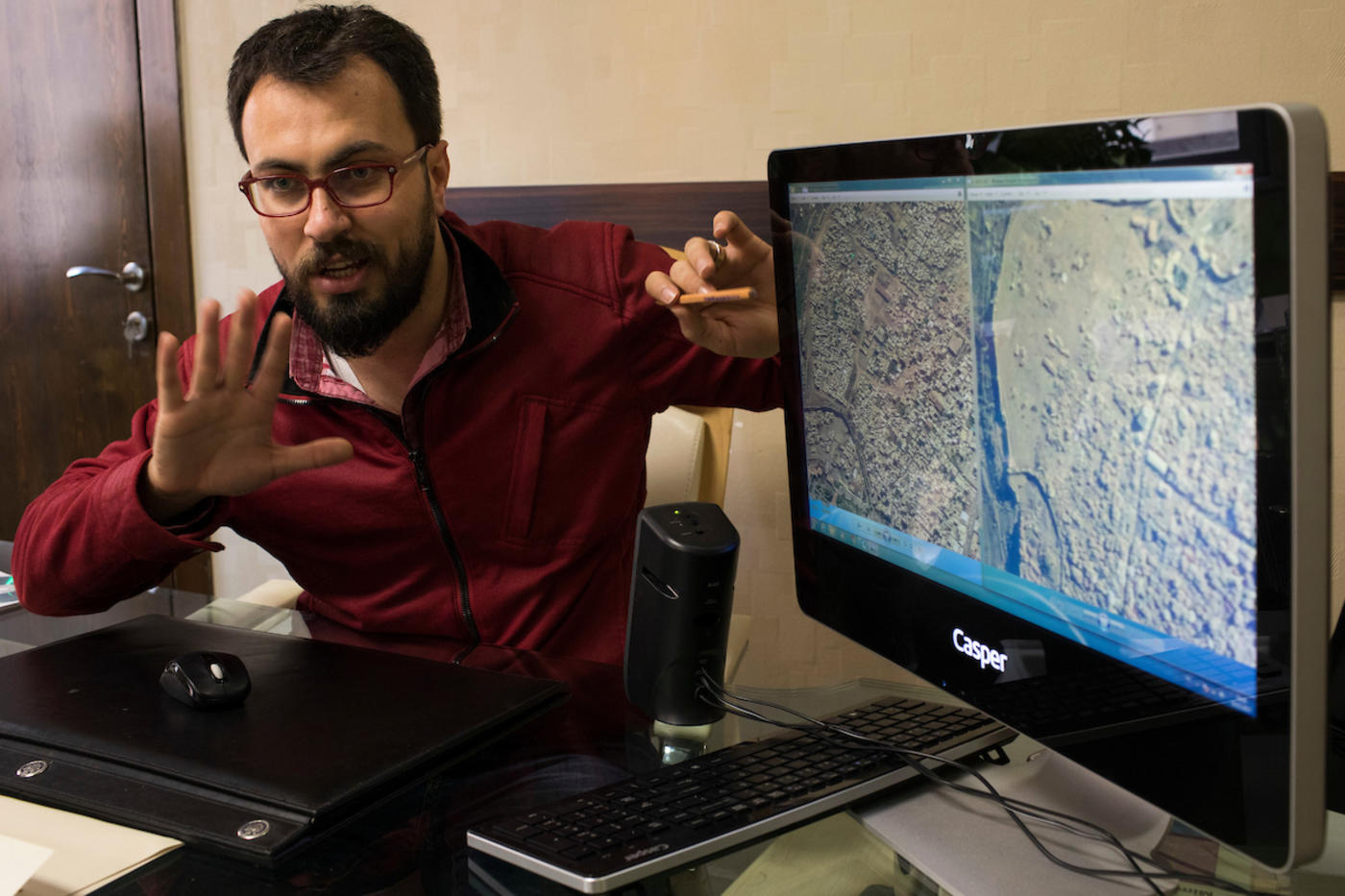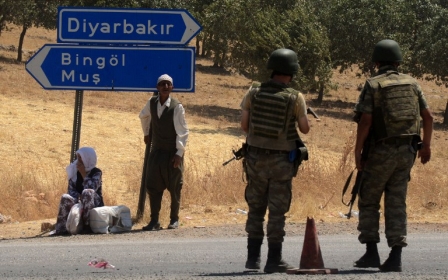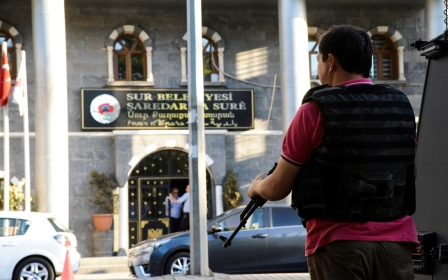Fear in Turkey's old city of Diyarbakir, despite multi-million reconstruction
DIYARBAKIR, Turkey - Liwaza Zamba, 57, has twice been forced to leave her home because of the ongoing conflict between the Kurdistan Workers' Party (PKK) and the Turkish state.
In 1993, after months of fighting between Turkish soldiers and Kurdish militants, her entire village was one of at least 3,000 razed to the ground by the military, forcing her and her family to move to Diyarbakir’s ancient walled city of Sur.
'We were only worried about saving the lives of our children, and all the things we owned are now mixed with the rubble'
- Liwaza Zamba, 57, Sur
A little over a year ago, Zamba tied her white headscarf to a stick and waved it out of her window at Turkish soldiers, pleading with them to let her, her five children, and 25 relatives, get out of the district, which had been the site of an intense urban battle for a month.
“Police had been constantly announcing we must leave, but our family stayed for as long as we could because my children were so young, it was difficult to go outside, with helicopters and tanks and bullets flying,” Zamba said, sitting on the floor of a ramshackle apartment she is renting in a neighbourhood less than a kilometre from her old home.
“We came with nothing, we were only worried about saving the lives of our children, and all the things we owned are now mixed with the rubble of my home.”
In July 2015, Unesco added the district of Sur to its World Heritage List, but by the end of the year the ancient homes, churches and mosques there were already under threat. A year after the fighting ended, Turkish authorities are razing the district at a breakneck pace, and residents like Zamba have no hope of ever living there again.
Between December 2015 and March 2016, 19 different Turkish security forces – from police to infantry backed by helicopter gunships and tanks – fought for control of the eastern half of the walled district of Sur, flanked on the east by the Tigris river, and on the west by the once bustling thoroughfare of Gazi Boulevard.
'Should we abandon this mosque, Diyarbakir, to those bastards?'
- Ahmet Davutoglu, then-prime minister, 2016
Turkish officials have said the fighting began after local militants with the Civil Protection Units (YPS), a group linked to the outlawed Kurdistan Workers' Party (PKK), tried to seize control of five neighbourhoods in Sur. Armed with machine guns, RPGs and explosives, fighters set up checkpoints, erected barricades and dug trenches to keep law enforcement out. The government imposed a round-the-clock curfew, then began a bloody and difficult urban counter-terrorism operation.
By March 2016, when the area was declared cleared, the government said 279 militants and 60 security forces had been killed. The youngest alleged militant killed was a 13-year old girl.
But human rights activists and former local officials say the operation was spurred by the central government’s long-stated desire to rebuild Sur into a tourist attraction, turning it into a district that would be too expensive for its former impoverished residents to live there.
National and local officials had been working on a revitalisation plan for Sur since 2012, but in 2013 those plans were put on hold after stiff opposition from the newly elected local government led by the pro-Kurdish People’s Democracy Party (HDP).
Renewed violence
In 2015, a two-year ceasefire between the PKK and Turkey collapsed after two policemen were killed in Diyarbakir. Security forces imposed curfews in several towns in the Kurdish southeast, and YPS fighters, locals from Sur as well as from the countryside, flocked to Diyarbakir, declaring several neighbourhoods as autonomous zones in August 2015.
“People did not accept the idea the government would rebuild their homes in Sur, so some youth decided to defend it,” said Farrah, a former resident whose home was destroyed in the battle.
“There was a curfew, and three people in my area were killed – a girl who went out to get bread, a woman hanging clothes on her balcony, an old man trying to feed birds – they were shot by soldiers.”
Nearly the entire eastern half of Sur – six neighbourhoods of winding cobblestone warrens with ancient mosques and churches – was forcibly emptied of their 25,000 residents by March 2016. A month later, then-prime minister Ahmet Davutoglu gave a speech at Sur’s ancient Ulu Mosque, congratulating security forces for defeating the militants and vowing the area would be rebuilt.
“Should we abandon this mosque, Diyarbakir, to those bastards?” he said, flanked by the watchful gaze of camouflaged soldiers toting machine guns.
“We will compensate every business owner they have hurt and rebuild every house they have destroyed. We will build the city of Sur so it will be something everyone wants to see.”
Since then, hundreds of local officials from the HDP and other pro-Kurdish parties have been detained over alleged support given to the YPS fighters, and Diyarbakir’s elected officials have been replaced with government caretakers.
Reconstruction - or destruction
In January 2017, prime minister Binali Yildirim announced the government plans to rebuild 35,000 homes in southeastern Turkey, including Sur, “burned down by the ditch-digging campaign of the terrorist organisation [PKK].” Government officials have said $21bn is being budgeted for the reconstruction, which will include 7,000 homes in Sur.
This month, the Diyarbakir governor’s office announced $11m would be spent on restoring homes and historic buildings in the district.
But the opposite seems to be happening, according to Mucahit Polat, a member of the board of directors of the Diyarbakir Chamber of Architects. Polat and his colleagues worked on proposals for the old restoration plan, and were elated when Unesco listed Sur as a World Heritage Site. Now they have penned an open letter to Unesco, blasting it for failing to pressure Turkey on securing the district.
“We can see where the trenches were, on maps, and where the fighting was,” he said, going through a series of aerial photographs of Sur in his office. “They are slowly destroying everything, even though fighting has finished.”
New fortress
An ancient fortress itself, now the eastern half of Sur has a new fortress, dozens of giant concrete barriers topped by barbed wire, and dozens of security forces that keep out residents, local officials, and observers like Polat. Giant curtains have been strung across streets to the area, and along Gazi Bulevard, police have cleared and shuttered all buildings over one story, ostensibly to secure construction workers inside from YPS snipers, but also making it impossible to even observe the area.
Days after the area was declared clear, in March 2016, the central government announced it was expropriating 82 percent of the land and structures in Sur. With the Housing Development Administration of Turkey and the State Treasury already owning the rest of the land, this means the entire walled city now belongs to the central government.
“There are thousands of important historical structures there that we fear are going to be lost,” said Polat. Of more than 450 structures – mosques, churches, hamaams, and homes – Polat’s research shows more than 60 percent have already been destroyed or significantly damaged.
A February 2017 report by the UN Human Rights Commissioner found that six months after the government declared fighting had ended, approximately 1,000 square metres of land was being cleared per day.
Renters like Zamba, who made up most of Sur’s residents, have lost their right to return home, with some able to receive 5,000 TL ($1,380) as a flat compensation for material loss, and 1,000 TL ($330) a month for rent to live elsewhere.
No return home
Homeowners have been offered 500 TL ($140) per square metre of land they owned, said Polat. “It’s far less money than what a historical parcel like that is worth, and it's definitely not enough for them to ever afford to live there after any restoration is done.”
Even that rate of compensation is difficult to obtain, said Ayhan Dogrual, Sur District co-chair for the Democratic Regions Party (BDP), who also lost her home in the conflict.
“Now residents are coming to us saying authorities will cut the cost of demolishing their homes.” A homeowner who would receive 100,000 TL under the compensation plan, Ayhan offers as an example, “is now being told to pay 25,000 TL for the bulldozers, 5,000 TL for the labor... one person told me they have gone all the way down to 30,000 TL for their home.”
“The government has always said it wants to rebuild Sur, and for that we need to leave it,” said Farrah, the former resident. “Now, I guess they have gotten their wish, one way or another.”
Middle East Eye propose une couverture et une analyse indépendantes et incomparables du Moyen-Orient, de l’Afrique du Nord et d’autres régions du monde. Pour en savoir plus sur la reprise de ce contenu et les frais qui s’appliquent, veuillez remplir ce formulaire [en anglais]. Pour en savoir plus sur MEE, cliquez ici [en anglais].


